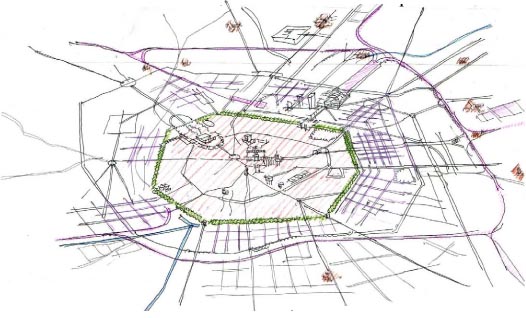In
this map I wanted to explore the concept of non-being-places. Normally we orient
ourselves first of all
by locating ourselves on a map, then the map makes sense. It's all about where
you are. But what
if we change that point, what if your first reference is always a place where
you are not, what
if you locate yourself using the distance between this place and you?
Sunday, December 23, 2012
Thursday, December 13, 2012
Sunday, December 9, 2012
TEST #07 PARTICULAR FORMS
THE MEANING BEYOND PARTICULAR FORMS
For a good many years, researchers in the field of reading and linguistics approached the problem of the acquisition of knowledge from printed symbols with the idea that meaning was assembled on a unit-by-unit basis in linear sequence. One began with small units, such as letters and words, and then built up to the larger units of sentences and paragraphs.
But while this view has been essentially discarded, a replacement has not yet been completely worked out. A new view does see the eye-brain interaction as not necessarily linear, but rather complex, and utilizing processes that allow the apprehension of the visual stimuli of printed text at several levels simultaneously. Meaning seems to come from an all-at-once grasp of the relation of the stimulus to the reader's previous knowledge structures, rather than from a bit-by-bit build up. We have all had the experience of glancing at a paragraph or page in order to quickly derive meaning, with no recollection whatever of individual letters, words, or sentences. Meaning goes beyond particular forms.
TEST#06 COLLECTIVE MAP VS INDIVIDUAL
COLLECTIVE MAP VS INDIVIDUAL
A comment made by Bertrand Russell made me think; "Scientific knowledge aims at being wholly impersonal and tries to state what has been discovered by the collective intellect of mankind. It is important for cartographers to understand this distinction between individual and collective intellect."
This time the challenge was to destroy this old division between individual and collective intellect. I want to generate a map made by the perception of a collective but mixing it with my own subjective point of view. First I generate my own perceptive map, one thing of Milan that catches my attention is that in every corner it have a gate. I want to make a personal map of that gates and mix with the collective information. In order to construct a first collective perception of the places I use digital tools as Google Adwords, Gephi, Cytoscape and I start analizing phisical places as if it were virtual places, by number of likes, searchs and virtual visitors.
Saturday, December 8, 2012
TEST#05 RADIAL CITY
The growth of monocentric cities, such as Milano, through ever-growing radial rings, is thought and described mainly as a centrifugal process. It brings a radial shapes to the maps. The external boundaries of the city, suddenly became unrecognizable, are the object and the main issue in the debate on its expansion. To describe its nature, the term “endless city” has been invented. Using destruction as a constructive agent here, we can see how the rings can bring a full new geography to the city.
Monday, December 3, 2012
Subscribe to:
Posts (Atom)























